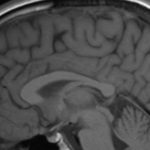1. Greater number of neurons in the lateral hypothalamic area (LHA) and tuberomammillary nucleus (TMN) were correlated with decreased sleep drive.
2. Phenotypes of decreased sleep drive seen in Alzheimer’s Dementia and Progressive Supranuclear Palsy were correlated with various neuronal activity periods during sleep, suggesting a potential mechanism for sleep-wake disturbances in early neurodegenerative disease.
Level of Evidence: 2 (Good)
Study Rundown: Sleep disturbances are a characteristic component of many neurodegenerative diseases. Alzheimer’s disease (AD), for example, is characterized by ‘sundowning’ and excessive daytime sleepiness, while progressive supranuclear palsy (PSP) is more likely to present with a decreased sleep drive. The mechanisms driving these changes to the sleep-wake cycle are poorly understood, although neurobiology is thought to play an important role. The present study sought to correlate brain regions known to participate in the neuronal basis of sleep with disturbances seen in neurodegenerative conditions. A total of 19 patients with neurodegenerative conditions were included in the histopathologic component of this study; notably, the AD patients had a significantly lower age of death than non-AD patients. Patients with PSP had a lower sleep drive than patients with AD, as demonstrated by a shorter overall sleep time, worse sleep maintenance and a lower proportion of time spent in restorative NREM2 sleep. Several subcortical regions on histopathologic examination showed reduced wake-promoting neurons in patients with AD compared to those with PSP. Further analysis correlated increased volume of neurons within the LHA and the TMN with a greater frequency of sleep disturbances. This study conducted by Oh et al demonstrated a strong correlation between neuronal activity within the LHA and TMN regions of the subcortical brain with sleep disturbances in patients with AD and PSP. The extensive analysis described here is strengthened by clinical, radiological and histopathological data, as well as the strong biologic plausibility of the study hypothesis. Weaknesses of this study include the small sample size of only 19 patients, as well as the limited external validity of this study. However, this work is important in spurring future research on the specific mechanisms of sleep disturbances in patients with neurodegenerative disorders and how these can be targeted to improve therapeutic options.
Click here to read this study in JAMA Neurology
Relevant Reading: Wake-active neurons across aging and degeneration: a potential role for sleep disturbances in promoting disease
In-Depth [prospective cohort study]: This prospective cohort study enrolled participants at a single center between 2008 and 2020. Patients underwent extensive testing at baseline, including polysomnography and electroencephalography sleep studies. Patients were eligible if they had a diagnosis of AD or PSP; patients were excluded from the study if they had a history of any head trauma, brain infection, neoplasm, stroke, demyelinating disease or medication use which might interfere with central nervous system function. The control group consisted of healthy older adults. Outcomes included a number of sleep parameters and histopathological findings on postmortem analysis. The mean age of death for histopathological examination was 66.8 years in the AD group (standard deviation 7.99) and was 74.67 years (5.17) in the control group (p = 0.01). Patients with PSP had a lower sleep drive than patients with AD. In PSP versus AD patients: mean sleep time was 285.39 (SD 106.83) minutes vs 399.90 (96.38) minutes (P = .04), sleep maintenance was 61.20% (18.21%) vs 80.16% (13.60%), (P = .01), percentage of time in NREM2 sleep during the sleep period time mean 29.15% (11.23%) vs 43.04% (9.94%) (P = .006). Neuronal activity in the locus coeruleus was higher in the PSP patients (mean number 35,690.67, standard deviation 21,082.65) than in the AD patients (mean number 8,865.60, standard deviation 2716.15) (p<0.001). The same was true of the LHA neurons (23 292.10, standard deviation 11 185.83 versus. 45 808.00 [27 872.15], p =0.04) and the TMN neurons (53 076.40 [31 814.81] vs. 119 396.00 [71 504.65], p=0.02). A Spearman correlation plot was used to demonstrate the correlation between the greater volume of neurons in the LHA and TMN with decreased sleep drive. Specific sleep parameters and their associations with each subcortical neuronal region are as follows: sleep time (LHA: r = −0.63; P = .009; TMN: r = −0.62; P = .008), lower sleep maintenance (LHA: r = −0.85;P < .001; TMN: r = −0.78;P < .001), and greater percentage of wake after sleep onset during the sleep period time (LHA: r = 0.85; P < .001; TMN: r = 0.78; P < .001).
Image: PD
©2022 2 Minute Medicine, Inc. All rights reserved. No works may be reproduced without expressed written consent from 2 Minute Medicine, Inc. Inquire about licensing here. No article should be construed as medical advice and is not intended as such by the authors or by 2 Minute Medicine, Inc.


